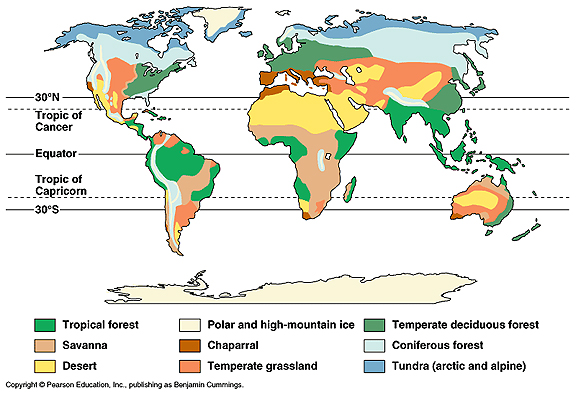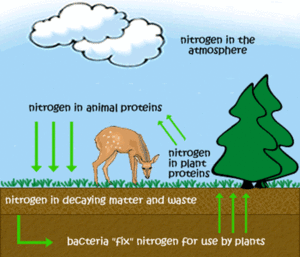Terrestrial ecology: Difference between revisions
m The LinkTitles extension automatically added links to existing pages (https://github.com/bovender/LinkTitles). |
|||
| (13 intermediate revisions by 3 users not shown) | |||
| Line 2: | Line 2: | ||
== '''Defining and Researching Terrestrial Ecology''' == | == '''Defining and Researching Terrestrial Ecology''' == | ||
'''''Terrestrial Ecology''''' specifies the relations of organisms and their physical environment on land. Terrestrial Ecology can be further defined through categorization of terrestrial biomes and terrestrial ecosystems. Interaction is the main factor in understanding what is happening in an ecosystem. When studying and researching terrestrial ecosystems look for specific factors that are unique from one another, such as the '''Biotic''' and '''Abiotic''' factors. The interactions between these factors are unique and can help you to | '''''Terrestrial [[Ecology]]''''' specifies the relations of [[organisms]] and their physical environment on land. Terrestrial Ecology can be further defined through categorization of terrestrial [[biomes]] and terrestrial ecosystems. Interaction is the main factor in understanding what is happening in an ecosystem. When studying and researching terrestrial ecosystems look for specific factors that are unique from one another, such as the '''Biotic''' and '''Abiotic''' factors. The interactions between these factors are unique and can help you to understand a particular process and ecosystem, and affect the benefits that humans gain within an ecosystem through [[essential ecosystem services]]. | ||
= '''Terrestrial Ecosystems vs Terrestrial Biomes''' = | = '''Terrestrial Ecosystems vs Terrestrial Biomes''' = | ||
| Line 15: | Line 15: | ||
---- | ---- | ||
Terrestrial ecosystems can be categorized through ''biotic'' and ''abiotic'' factors. The interactions that occur between biotic and abiotic factors can help us to better understand what is happening within a particular ecosystem and to further classify those factors and the ecosystem itself. Biotic factors or biological factors are the autotrophs, heterotrophs, and decomposers of a particular ecosystem. You may remember these as producers or autotrophs, consumers or heterotrophs, and decomposers or detrivores. These biotic factors evidence the differentiation in ecosystems and biomes, for example and in most cases, an autotroph that typically lives in a cold, wet climate would not be able to survive in a hot, dry climate such as a desert or savanna. Abiotic factors are physical components to a ecosystem and these components affect the biological diversity. In short, abiotic factors directly affect biotic factors. Abiotic factors are the unique aspects of the climate, the weather, the type of soil in the region, and the water within the ecosystem. An example of this may be the type of soil within an ecosystem, whether it is silt, clay,[[loam]], silt loam, sand, sand loam, clay loam, sandy clay loam, and etc. A widely accepted method to classifying the type of soil through [[Soil Textures]] and this can present evidence of unique characteristics of [[Soil Structures]] within different ecosystems. | Terrestrial ecosystems can be categorized through ''biotic'' and ''abiotic'' factors. The interactions that occur between biotic and abiotic factors can help us to better understand what is happening within a particular ecosystem and to further classify those factors and the ecosystem itself. Biotic factors or biological factors are the autotrophs, heterotrophs, and [[decomposers]] of a particular ecosystem. You may remember these as producers or autotrophs, consumers or heterotrophs, and decomposers or detrivores. These biotic factors evidence the differentiation in ecosystems and biomes, for example and in most cases, an autotroph that typically lives in a cold, wet climate would not be able to survive in a hot, dry climate such as a desert or savanna. Abiotic factors are physical components to a ecosystem and these components affect the biological diversity. In short, abiotic factors directly affect biotic factors. Abiotic factors are the unique aspects of the climate, the weather, the type of [[soil]] in the region, and the water within the ecosystem. An example of this may be the type of soil within an ecosystem, whether it is [[silt]], [[clay]],[[loam]], silt loam, [[sand]], sand loam, clay loam, sandy clay loam, and etc. A widely accepted method to classifying the type of soil through [[Soil Textures]] and this can present evidence of unique characteristics of [[Soil Structures]] within different ecosystems. | ||
| Line 55: | Line 55: | ||
''Heterotrophs'' are living organisms that gain energy and nutrition through consuming other organisms. The organisms form cells and body parts by using nutrients as "building blocks." [[Animals]] and most microorganisms are heterotrophs that can be classified by the organisms they consume. Humans are considered to be heterotrophs, we rely heavily on other organisms. For example, a large portion to most of our diets, [[Monocots]] are grains such as barley, rice and wheat. These grains are in many of the products we consume on a daily basis and even for every meal such as bread or even rice. Even fruits like coconut, pineapples and dates, can be classified as Monocots. Heterotrophs are secondary and tertiary consumers. | ''Heterotrophs'' are living organisms that gain energy and nutrition through consuming other organisms. The organisms form cells and body parts by using nutrients as "building blocks." [[Animals]] and most [[microorganisms]] are heterotrophs that can be classified by the organisms they consume. Humans are considered to be heterotrophs, we rely heavily on other organisms. For example, a large portion to most of our diets, [[Monocots]] are grains such as barley, rice and wheat. These grains are in many of the products we consume on a daily basis and even for every meal such as bread or even rice. Even fruits like coconut, pineapples and dates, can be classified as Monocots. Heterotrophs are secondary and tertiary consumers. | ||
''Herbivore'': Organisms that eat plants | ''Herbivore'': Organisms that eat plants | ||
| Line 72: | Line 72: | ||
'''Decomposers''' | '''Decomposers''' | ||
"Decomposers," are organisms who feed on dead plant and animal material and also feed on waste. Decomposers break down and partly digest organic material. This feeding process aids in the maintenance of [[Nutrient Cycling]] and restoration of rich soil. ''Nutrient Cycling'' is the moving of organic and inorganic materials through an ecosystem, to provide nutrients. For example, earthworms feed on live and dead organic material. Earthworm secretions primarily create the organic composition of the "O Horizon," a layer of organic soil that classifies an ecosystem's Soil [[Properties]]. This was found to be true by Charles Darwin, who studied soil or [[Vegetable Mould]] and its decomposers. The soil properties directly affect the biotic factors within an ecosystem and largely influence the decomposers of the ecosystem. There are three types of decomposers, ''Protists'', ''Fungi'', and ''Bacteria''. | "Decomposers," are organisms who feed on dead plant and animal material and also feed on waste. Decomposers break down and partly digest organic material. This feeding process aids in the maintenance of [[Nutrient Cycling]] and restoration of rich soil. ''Nutrient Cycling'' is the moving of organic and inorganic materials through an ecosystem, to provide nutrients. For example, earthworms feed on live and dead organic material. [[Earthworm]] secretions primarily create the organic composition of the "O Horizon," a layer of organic soil that classifies an ecosystem's Soil [[Properties]]. This was found to be true by [[Charles Darwin]], who studied soil or [[Vegetable Mould]] and its decomposers. The soil properties directly affect the biotic factors within an ecosystem and largely influence the decomposers of the ecosystem. There are three types of decomposers, ''Protists'', ''Fungi'', and ''Bacteria''. | ||
'''"Protists,"''' a single celled organism. Protists look for dead insects or other microorganisms to eat. There are four important types of protists: Flagelletes, Naked Amoeba, Testate Amoeba, and Cilliates. | '''"Protists,"''' a single celled organism. Protists look for dead insects or other microorganisms to eat. There are four important types of protists: Flagelletes, Naked [[Amoeba]], Testate Amoeba, and Cilliates. | ||
| Line 83: | Line 83: | ||
(Miklos, Claudio. 2011 October, 29) | (Miklos, Claudio. 2011 October, 29) | ||
[[File:amoeba.jpg|100px|]]''Naked Amoeba'': Less common in dry soil and they eat everything. They look like a splattered, blob of jelly. | [[File:amoeba.jpg|100px|]]''[[Naked Amoeba]]'': Less common in dry soil and they eat everything. They look like a splattered, blob of jelly. | ||
(EnchantedLearning.com, Copyright2001-2016) | (EnchantedLearning.com, Copyright2001-2016) | ||
| Line 152: | Line 152: | ||
Climate: Wet, humid season. Dry season. | Climate: Wet, humid season. Dry season. | ||
Freshwater swamps and marshes are the most productive ecosystems on land. The lower elevation and warm, humid climate creates an ecosystem that is very productive in the simultaneous relationship between biotic and abiotic factors. Marshes resupply groundwater and they manage the flow of water to streams. Marshes play a vital role near "watersheds" by reducing the amount of damage from flooding and this is done through the storing of excess water. Marshes regulate extra sediments and pollutants through decomposition and nutrient cycling. Microorganisms and vegetation feed on the excess nutrients provided by the extra sediments and pollutants such as nitrogen or phosphorous from fertilizers, a very relevant challenge within pollution in agriculture. There is a great diversity of flora and fauna or plants and animals within wetlands. Flora and fauna are the biotic factors within ecosystems or the autotrophs and heterotrophs. The abiotic factors like the humid climate, overly saturated soil, and excess water directly affect the flora and fauna within swamps and marshes. Specifically, freshwater marshes, show the greatest efficiency and productivity for nutrient cycling and converting of resources than any other ecosystem. For example, [[Black Willow]], a type of tree that has roots made for taking in moisture and for living in soil that has a high level of moisture, like the wetlands. Decomposers play a vital role in the nutrient cycling and carbon distribution within a freshwater marsh. Ascomycetes and Basidiomycetes, are most common within fresh water marshes, these decomposers convert a large amount of plant litter or "detritus" into Carbon Dioxide and nitrogen as a result of respiration and nitrogen fixing. Respiration occurs at a more productive rate within wet climates opposed to dry climates. When the fungi develop mycorrhizal relationships with plants, in an ecosystem that is humid and has excess water in the soil, the plants and fungus in theory would be working at a greater level of productivity. With more active plants, come higher levels of nutrients. For herbivores, this can create a competitive ecosystem for both space and nutrients. Many insects live in swamps and marshes and many feed on plants. The mycorrhizal relationships within swamps and marshes are not only great for nutrient cycling but also defense against these insects. The fungi release spores that can kill the insects trying to eat Another adaptation and protection against abiotic factors, are [[Flavonoids]]. [[Flavonoids]] are within all plants on Earth and they provide protection against UV, Protection against invasive pathogens, and signaling symbiosis. | Freshwater swamps and marshes are the most productive ecosystems on land. The lower elevation and warm, humid climate creates an ecosystem that is very productive in the simultaneous relationship between biotic and abiotic factors. Marshes resupply groundwater and they manage the flow of water to streams. Marshes play a vital role near "watersheds" by reducing the amount of damage from flooding and this is done through the storing of excess water. Marshes regulate extra sediments and pollutants through [[decomposition]] and nutrient cycling. Microorganisms and vegetation feed on the excess nutrients provided by the extra sediments and pollutants such as nitrogen or phosphorous from fertilizers, a very relevant challenge within pollution in [[agriculture]]. There is a great diversity of flora and fauna or plants and animals within wetlands. Flora and fauna are the biotic factors within ecosystems or the autotrophs and heterotrophs. The abiotic factors like the humid climate, overly saturated soil, and excess water directly affect the flora and fauna within swamps and marshes. Specifically, freshwater marshes, show the greatest efficiency and productivity for nutrient cycling and converting of resources than any other ecosystem. For example, [[Black Willow]], a type of tree that has roots made for taking in moisture and for living in soil that has a high level of moisture, like the wetlands. Decomposers play a vital role in the nutrient cycling and carbon distribution within a freshwater marsh. Ascomycetes and Basidiomycetes, are most common within fresh water marshes, these decomposers convert a large amount of plant litter or "detritus" into Carbon Dioxide and nitrogen as a result of respiration and nitrogen fixing. Respiration occurs at a more productive rate within wet climates opposed to dry climates. When the fungi develop mycorrhizal relationships with plants, in an ecosystem that is humid and has excess water in the soil, the plants and fungus in theory would be working at a greater level of productivity. With more active plants, come higher levels of nutrients. For herbivores, this can create a competitive ecosystem for both space and nutrients. Many [[insects]] live in swamps and marshes and many feed on plants. The mycorrhizal relationships within swamps and marshes are not only great for nutrient cycling but also defense against these insects. The fungi release spores that can kill the insects trying to eat Another adaptation and protection against abiotic factors, are [[Flavonoids]]. [[Flavonoids]] are within all plants on Earth and they provide protection against UV, Protection against invasive pathogens, and signaling symbiosis. The flora and fauna within an ecosystem have developed adaptations to aid in interaction with both biotic and abiotic factors within their ecosystem. The biotic and abiotic factors have a unique symbiotic relationship that allows organisms to coincide with each other and their environment and this is what makes studying terrestrial ecology so interesting. | ||
== References == | == References == | ||
Adl, M.S., V.V.S.R. Gupta. 2006, July. "Protists in soil ecology and forest nutrient cycling." http://link.galegroup.com/apps/doc/A149615503/SCIC?u=sunybuff_main&xid=dff4638c. | Adl, M.S., V.V.S.R. Gupta. 2006, July. "Protists in [[Soil Ecology|soil ecology]] and forest nutrient cycling." http://link.galegroup.com/apps/doc/A149615503/SCIC?u=sunybuff_main&xid=dff4638c. | ||
Beacom, Betsy. 2017, April 25. "Food Chains In Deciduous Forests." https://sciencing.com/food-chains-deciduous-forest-7449795.html | Beacom, Betsy. 2017, April 25. "[[Food chains|Food Chains]] In Deciduous Forests." https://sciencing.com/food-chains-deciduous-forest-7449795.html | ||
Blanchfield, Deirdre S. 2011 June, 13. "Biotic community." http://ic.galegroup.com.gate.lib.buffalo.edu/ic/scic/ReferenceDetailsPage/ReferenceDetailsWindow?disableHighlighting=&displayGroupName=Reference&docIndex=&source=&prodId=&mode=view&limiter=&display-query=&contentModules=&action=e&sortBy=&windowstate=normal&currPage=&dviSelectedPage=&scanId=&query=&search_within_results=&p=SCIC&catId=&u=sunybuff_main&displayGroups=&documentId=GALE%7CCV2644151534&activityType=BasicSearch&failOverType=&commentary= | Blanchfield, Deirdre S. 2011 June, 13. "Biotic community." http://ic.galegroup.com.gate.lib.buffalo.edu/ic/scic/ReferenceDetailsPage/ReferenceDetailsWindow?disableHighlighting=&displayGroupName=Reference&docIndex=&source=&prodId=&mode=view&limiter=&display-query=&contentModules=&action=e&sortBy=&windowstate=normal&currPage=&dviSelectedPage=&scanId=&query=&search_within_results=&p=SCIC&catId=&u=sunybuff_main&displayGroups=&documentId=GALE%7CCV2644151534&activityType=BasicSearch&failOverType=&commentary= | ||
Blanchfield, Deirdre S. Gale "Detritivores." 2016. May, 25. http://link.galegroup.com/apps/doc/CV2644150372/SCIC?u=sunybuff_main&xid=6309b795. | Blanchfield, Deirdre S. Gale "[[Detritivores]]." 2016. May, 25. http://link.galegroup.com/apps/doc/CV2644150372/SCIC?u=sunybuff_main&xid=6309b795. | ||
Biology-online.org. 2015, June 14. "Diazotroph." https://www.biology-online.org/dictionary/Diazotroph | Biology-online.org. 2015, June 14. "Diazotroph." https://www.biology-online.org/dictionary/Diazotroph | ||
| Line 181: | Line 181: | ||
Geyer,Wayne A. Row, John M. 2010, May. "Black Willow." https://plants.usda.gov/factsheet/pdf/fs_sani.pdf | Geyer,Wayne A. Row, John M. 2010, May. "Black Willow." https://plants.usda.gov/factsheet/pdf/fs_sani.pdf | ||
Lerner. K Lee. Lerner. Brenda Wilmoth. 2014 The Gale Encyclopedia of Science. "Autotroph." http://link.galegroup.com/apps/doc/CV2644030216/SCIC?u=sunybuff_main&xid=14fc9a52. | Lerner. K Lee. Lerner. Brenda Wilmoth. 2014 The Gale Encyclopedia of Science. "Autotroph." http://link.galegroup.com/apps/doc/CV2644030216/SCIC?u=sunybuff_main&xid=14fc9a52. | ||
| Line 191: | Line 190: | ||
Moreno, J. Perez. Read. D.J. 2003. March, 3. "Mycorrhizas and Nutrient Cycling in Ecosystems- A Journey Towards Relevance." http://onlinelibrary.wiley.com.gate.lib.buffalo.edu/doi/10.1046/j.1469-8137.2003.00704.x/full | Moreno, J. Perez. Read. D.J. 2003. March, 3. "Mycorrhizas and Nutrient Cycling in Ecosystems- A Journey Towards Relevance." http://onlinelibrary.wiley.com.gate.lib.buffalo.edu/doi/10.1046/j.1469-8137.2003.00704.x/full | ||
Richardson, Curtis J. 2010, October 1. "The Everglades: North America's Subtropical Wetland." http://ll3md4hy6n.search.serialssolutions.com/?ctx_ver=Z39. | Richardson, Curtis J. 2010, October 1. "The Everglades: North America's Subtropical Wetland." http://ll3md4hy6n.search.serialssolutions.com/?ctx_ver=Z39.882004&ctx_enc=info%3Aofi%2Fenc%3AUTF8&rfr_id=info%3Asid%2Fsummon.serialssolutions.com&rft_val_fmt=info%3Aofi%2Ffmt%3Akev%3Amtx%3Ajournal&rft.genre=article&rft.atitle=The+Everglades%3A+North+America%27s+subtropical+wetland&rft.jtitle=Wetlands+Ecology+and+Management&rft.au=Richardson%2C+Curtis+J&rft.date=2010-10-01&rft.pub=Springer&rft.issn=0923-4861&rft.eissn=1572-9834&rft.volume=18&rft.issue=5&rft.spage=517&rft_id=info:doi/10.1007%2Fs11273-009-9156-4&rft.externalDBID=BSHEE&rft.externalDocID=238262864¶mdict=en-US | ||
University of Michigan. 2017. October, 20. "Microbes: Transformers of Matter and Material." https://globalchange.umich.edu/globalchange1/current/lectures/kling/microbes/microbes.html | University of Michigan. 2017. October, 20. "Microbes: Transformers of Matter and Material." https://globalchange.umich.edu/globalchange1/current/lectures/kling/microbes/microbes.html | ||
| Line 200: | Line 199: | ||
Picture References | Picture References | ||
AlexiSeptimus. "Tomato feat. Zygomycota" https://www.deviantart.com/art/Tomato-feat-Zygomycota-51107074 | AlexiSeptimus. "Tomato feat. [[Zygomycota]]" https://www.deviantart.com/art/Tomato-feat-Zygomycota-51107074 | ||
CSERC. Central Sierra Environmental Resource Center. | CSERC. Central Sierra Environmental Resource Center. | ||
| Line 212: | Line 211: | ||
https://www.slideshare.net/ERCJPP/characteristics-of-living-things-50750349 | https://www.slideshare.net/ERCJPP/characteristics-of-living-things-50750349 | ||
Kayaken. 2017. March, 3. "Awesome Photos Of Nitrogen Cycle Apbio Werle Ecology Ch 50 55" http://big5kayakchallenge.com/photos-of-nitrogen-cycle/awesome-photos-of-nitrogen-cycle-apbio-werle-ecology-ch-50-55/ | Kayaken. 2017. March, 3. "Awesome Photos Of [[Nitrogen cycle|Nitrogen Cycle]] Apbio Werle Ecology Ch 50 55" http://big5kayakchallenge.com/photos-of-nitrogen-cycle/awesome-photos-of-nitrogen-cycle-apbio-werle-ecology-ch-50-55/ | ||
Lahr, Dan. 2014. March, 12. "Testate Amoeba CSI." https://testateamoebaeresearch.wordpress.com/category/dan-lahr/ | Lahr, Dan. 2014. March, 12. "Testate Amoeba CSI." https://testateamoebaeresearch.wordpress.com/category/dan-lahr/ | ||
Mckee, Shannon. 2017. April, 17. "Mycorrhizae: Boost Plant Growth and Yield." http://www.mantisplantprotection.com/mycorrhizae-boost-plant-growth-yield/ | Mckee, Shannon. 2017. April, 17. "[[Mycorrhizae]]: Boost Plant Growth and Yield." http://www.mantisplantprotection.com/mycorrhizae-boost-plant-growth-yield/ | ||
Miklos, Claudio. 2011. October, 29. "Euglena Diagram." https://commons.wikimedia.org/w/index.php?curid=17172675 | Miklos, Claudio. 2011. October, 29. "Euglena Diagram." https://commons.wikimedia.org/w/index.php?curid=17172675 | ||
Latest revision as of 14:18, 2 May 2025
Defining and Researching Terrestrial Ecology
Terrestrial Ecology specifies the relations of organisms and their physical environment on land. Terrestrial Ecology can be further defined through categorization of terrestrial biomes and terrestrial ecosystems. Interaction is the main factor in understanding what is happening in an ecosystem. When studying and researching terrestrial ecosystems look for specific factors that are unique from one another, such as the Biotic and Abiotic factors. The interactions between these factors are unique and can help you to understand a particular process and ecosystem, and affect the benefits that humans gain within an ecosystem through essential ecosystem services.
Terrestrial Ecosystems vs Terrestrial Biomes
Terrestrial ecosystems and terrestrial biomes are different from each other. Terrestrial ecosystems can be defined as a community of interaction between many living organisms and nonliving things on land. Terrestrial Biomes can be defined as an area, on land, that can be classified by the animals and plants that live within it. In some cases, there can be a few different ecosystems within a terrestrial biome. This means that biomes are on a larger geographical scale than ecosystems and biomes directly affect or make up the interactions within an ecosystem and the organisms within it.
Factors of Terrestrial Ecosystems
Terrestrial ecosystems can be categorized through biotic and abiotic factors. The interactions that occur between biotic and abiotic factors can help us to better understand what is happening within a particular ecosystem and to further classify those factors and the ecosystem itself. Biotic factors or biological factors are the autotrophs, heterotrophs, and decomposers of a particular ecosystem. You may remember these as producers or autotrophs, consumers or heterotrophs, and decomposers or detrivores. These biotic factors evidence the differentiation in ecosystems and biomes, for example and in most cases, an autotroph that typically lives in a cold, wet climate would not be able to survive in a hot, dry climate such as a desert or savanna. Abiotic factors are physical components to a ecosystem and these components affect the biological diversity. In short, abiotic factors directly affect biotic factors. Abiotic factors are the unique aspects of the climate, the weather, the type of soil in the region, and the water within the ecosystem. An example of this may be the type of soil within an ecosystem, whether it is silt, clay,loam, silt loam, sand, sand loam, clay loam, sandy clay loam, and etc. A widely accepted method to classifying the type of soil through Soil Textures and this can present evidence of unique characteristics of Soil Structures within different ecosystems.
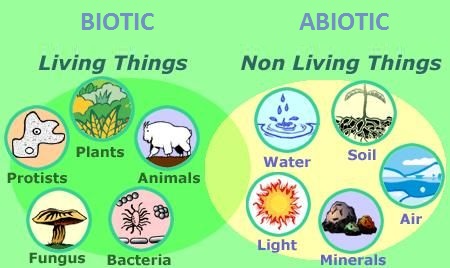 (Jnana Prabodhini Educational Resource Center, 2015. July 21)
(Jnana Prabodhini Educational Resource Center, 2015. July 21)
Biotic Factors
Autotrophs
-Autotrophs are organisms that create their own food by converting inorganic compounds into organic compounds. They are primary producers because they reside at the base of the food chain pyramid. There are two types of Autotrophs, Chemoautotrophs and Photoautotrophs.
Chemoautotrophs are bacteria that create energy with the chemical energy within inorganic compounds. This proccess occurs through "chemosynthesis" or the creation of organic compounds by bacteria and these bacteria use energy from chemical reactions that occur without sunlight. They use inorganic compounds like Carbon Dioxide to create sugars. For example, "Sulfur Reducers" are chemoautotrophs and they use inorganic sulfur compounds as a source of energy. Sulfur reducers can be found in locations that release sulfur such as near vents and active volcanoes on the ocean floor. Chemoautotrophs are said to be mainly found within the ocean and in the intestines of animals.
Photoautotrophs are plants and bacteria that contain "chloroplasts" and chloroplasts are able to create energy by converting energy from photons into chemical energy in sugars or other molecules. This occurs in process of photosynthesis. Photoautotrophs play a vital role in terrestrial ecosystems because they are a major provider in energy or food to animals. Plants or photoautotrophs are the primary or base within a food chain pyramid. However there are factors that make each ecosystem unique, so primary or base photoautotrophs will be different within different ecosystems.
Autotrophs can be differentiated by the type of energy they use. Chemoautotrophs use chemical energy and Photoautotrophs use light energy.
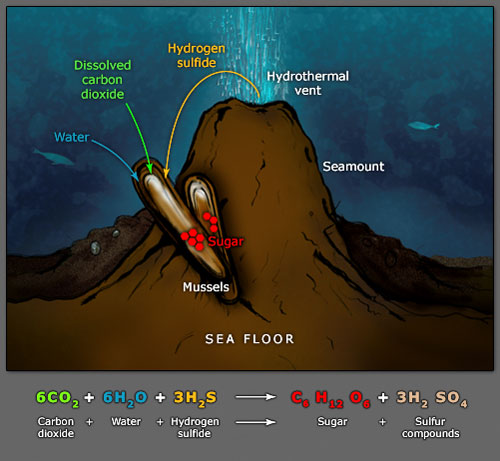
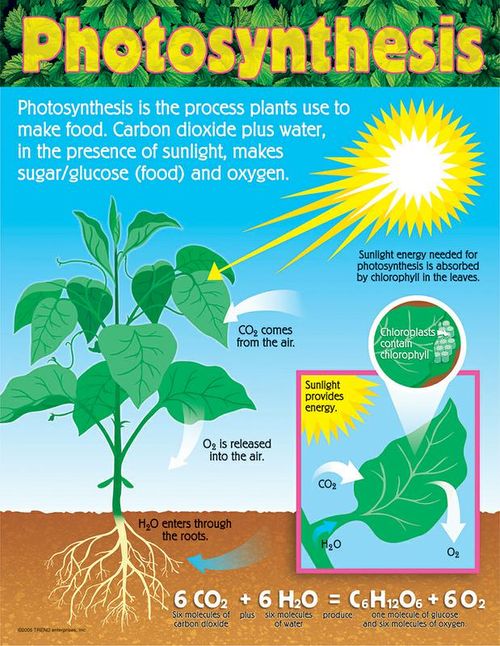 (Rowden, Ashley.Te Ara - the Encyclopedia of New Zealand. "Sea floor - Vents and seeps.")
(Rowden, Ashley.Te Ara - the Encyclopedia of New Zealand. "Sea floor - Vents and seeps.")
Heterotrophs
Heterotrophs are living organisms that gain energy and nutrition through consuming other organisms. The organisms form cells and body parts by using nutrients as "building blocks." Animals and most microorganisms are heterotrophs that can be classified by the organisms they consume. Humans are considered to be heterotrophs, we rely heavily on other organisms. For example, a large portion to most of our diets, Monocots are grains such as barley, rice and wheat. These grains are in many of the products we consume on a daily basis and even for every meal such as bread or even rice. Even fruits like coconut, pineapples and dates, can be classified as Monocots. Heterotrophs are secondary and tertiary consumers.
Herbivore: Organisms that eat plants
Carnivore: Organisms that eat animals
Omnivore: Organisms that eat both plant and animals
Decomposers that break down plants or animals can also be considered heterotrophic based on that they eat other organisms.
Decomposers
"Decomposers," are organisms who feed on dead plant and animal material and also feed on waste. Decomposers break down and partly digest organic material. This feeding process aids in the maintenance of Nutrient Cycling and restoration of rich soil. Nutrient Cycling is the moving of organic and inorganic materials through an ecosystem, to provide nutrients. For example, earthworms feed on live and dead organic material. Earthworm secretions primarily create the organic composition of the "O Horizon," a layer of organic soil that classifies an ecosystem's Soil Properties. This was found to be true by Charles Darwin, who studied soil or Vegetable Mould and its decomposers. The soil properties directly affect the biotic factors within an ecosystem and largely influence the decomposers of the ecosystem. There are three types of decomposers, Protists, Fungi, and Bacteria.
"Protists," a single celled organism. Protists look for dead insects or other microorganisms to eat. There are four important types of protists: Flagelletes, Naked Amoeba, Testate Amoeba, and Cilliates.
 Flagelletes: Very common, eat bacteria and are categorized with the "whip-like" tail they have.
Flagelletes: Very common, eat bacteria and are categorized with the "whip-like" tail they have.
(Miklos, Claudio. 2011 October, 29)
 Naked Amoeba: Less common in dry soil and they eat everything. They look like a splattered, blob of jelly.
Naked Amoeba: Less common in dry soil and they eat everything. They look like a splattered, blob of jelly.
(EnchantedLearning.com, Copyright2001-2016)
 Testate Amoeba: They rapidly reproduce and die. Testate Amoeba are categorized by their "test" or hat-like shell.
Testate Amoeba: They rapidly reproduce and die. Testate Amoeba are categorized by their "test" or hat-like shell.
(Lahr, Dan. 2014. March,12)
 Ciliates': More common in moist habitats whether its seasonally or constant. Cilliates have a hairy-looking outer ring.
Ciliates': More common in moist habitats whether its seasonally or constant. Cilliates have a hairy-looking outer ring.
(Egmond, Wim Van, "Ciliates")
"Fungi" are any single-celled or multi-nucleus organism that decomposes organic material in order to live such as mildew, yeast, mushrooms and mold. Mycorrhizal fungi is a term used to describe a relationship between these "fungi" and plant life. Mycorrhizal fungi release and distribute nitrogen and phosphorus from dead plant material. This release of nitrogen and phosphorus from mycorrhizal fungi are the primary source within terrestrial ecosystems and in the uptake in these nutrients within plants of these ecosystems. Mycorrhizal relationships also offer defense against insects and other organisms that may be looking for a source of nutrients. Nutrient Cycling is also known as "Ecological Cycling" and this refers to the processes of recycling resources that sustain all life on Earth such as carbon, nitrogen, water and etc. For example, one of the most vital roles within nutrient cycling in terrestrial ecosystems are the role of Mycorrhizal fungi. AMF or Arbuscular Mycorrhizal Fungi, is widely believed to be the first to form a relationship among the first terrestrial plants on Earth.
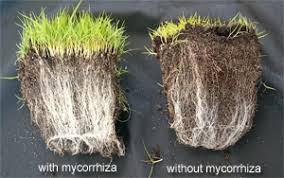 (Mckee, Shannon. 2017. April, 17)
(Mckee, Shannon. 2017. April, 17)
Our "true" fungi are basidiomycetes, ascomycetes, and zygomycetes and these fungi develop relationships with plants which is called mycorrhiza.
 Zygomycetes: Grows rapidly on food through hyphal network.
Zygomycetes: Grows rapidly on food through hyphal network.
(AlexiSeptimus)
 Ascomycetes: They grow in hyphae and are common in soil and aquatic habitats.
Ascomycetes: They grow in hyphae and are common in soil and aquatic habitats.
(Smith, David. 2014 March, 13)
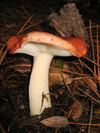 Basidiomycetes: They are the most commonly known because they are like our backyard mushrooms and they are important decomposers.
Basidiomycetes: They are the most commonly known because they are like our backyard mushrooms and they are important decomposers.
(CSERC.org)
"Bacteria" are single-celled microbes that are capable of living in almost all types of environments and temperatures. Without bacteria, humans would not exists and this is due to the role bacteria play in productivity within plants. They work to help with the rate of utilization of Carbon, Nitrogen, Oxygen, and Hydrogen and this is why bacteria are vital for all life. The picture below illustrates nitrogen fixing in the atmosphere. Diazotrophs are the unique microorganisms such as bacteria and Archaea, who are the only organisms able to incorporate and fix the nitrogen in the atmosphere by producing more nitrogen. The nitrogen becomes more readily available for organisms like autotrophs or plants.
Abiotic Factors
Climate and Weather: The condition of the atmosphere over long geological periods. Weather is the daily conditions of the ecosystem such as temperature, pressure, cloudiness and moisture that make up a biomes climate. Both weather and climate can affect an ecosystem. Climate has a long term affect and only if the climate is changing. Weather has a short term affect on an ecosystem such as daily productiveness. For example, if there is an increase in acidic rain from air pollution, this will directly affect pH level within soils and also kill flora and fauna.
Soil: It is the basis of which organisms live at and near the surface of the Earth and similar bodies altered by biological, chemical, and/or physical agents and processes. Soil is, has a high level of diversity. The soil properties are widely heterogeneous due to factors like climate, weather, type of organisms, the type of topography, the parent material and the time from which the ecosystem began. Hans Jenny, a natural scientist, furthered this understanding of soil formation through the Jenny Equation, S=F(cl,o,r,p,t....). All are large factors in soil formation and how rich the soil is, and this directly affects biotic factors. This can be further defined through the term Pedogenesis or soil formation and this term was coined by Hans Jenny. For example, freshwater marshes have a great diversity of organisms and very rich soil. The tundra has a low biodiversity due to its extremely cold weather, climate and poor soil condition.
Water: It is a constituent or a part of a whole. Water is vital for living organisms. Water is a factor of an ecosystem because biotic factors adapt to water conditions. The flora or plant life is directly affected by the amount of precipitation and moisture within the soil. The moisture within soil can be greater in areas that have smaller pore spaces and for example, clay holds on to more nutrients and water than sand. One can classify these types of soil through testing the Soil Textures. Another example, desert fauna, are adapted to life with extreme heat and dry climate. Beetles in particular are forced to wait until there is moisture in the air from fog, and they collect this moisture by running to the top of sand dunes and tipping there backs to the sky. As moisture collects on the back of the beetle, the drops run down into the beetles mouth. The harsh climate of the desert has affected the fauna to adapt to hot and dry climate.
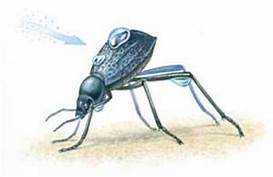 (Namib Beetle Illustration. Roberto Osti, Biomechanics)
(Namib Beetle Illustration. Roberto Osti, Biomechanics)
Putting It All Together
Biome: Grasslands/Wetlands
Type of Ecosystem: Swamps and Marshes
Type of Swamp and Marsh: Freshwater
Climate: Wet, humid season. Dry season.
Freshwater swamps and marshes are the most productive ecosystems on land. The lower elevation and warm, humid climate creates an ecosystem that is very productive in the simultaneous relationship between biotic and abiotic factors. Marshes resupply groundwater and they manage the flow of water to streams. Marshes play a vital role near "watersheds" by reducing the amount of damage from flooding and this is done through the storing of excess water. Marshes regulate extra sediments and pollutants through decomposition and nutrient cycling. Microorganisms and vegetation feed on the excess nutrients provided by the extra sediments and pollutants such as nitrogen or phosphorous from fertilizers, a very relevant challenge within pollution in agriculture. There is a great diversity of flora and fauna or plants and animals within wetlands. Flora and fauna are the biotic factors within ecosystems or the autotrophs and heterotrophs. The abiotic factors like the humid climate, overly saturated soil, and excess water directly affect the flora and fauna within swamps and marshes. Specifically, freshwater marshes, show the greatest efficiency and productivity for nutrient cycling and converting of resources than any other ecosystem. For example, Black Willow, a type of tree that has roots made for taking in moisture and for living in soil that has a high level of moisture, like the wetlands. Decomposers play a vital role in the nutrient cycling and carbon distribution within a freshwater marsh. Ascomycetes and Basidiomycetes, are most common within fresh water marshes, these decomposers convert a large amount of plant litter or "detritus" into Carbon Dioxide and nitrogen as a result of respiration and nitrogen fixing. Respiration occurs at a more productive rate within wet climates opposed to dry climates. When the fungi develop mycorrhizal relationships with plants, in an ecosystem that is humid and has excess water in the soil, the plants and fungus in theory would be working at a greater level of productivity. With more active plants, come higher levels of nutrients. For herbivores, this can create a competitive ecosystem for both space and nutrients. Many insects live in swamps and marshes and many feed on plants. The mycorrhizal relationships within swamps and marshes are not only great for nutrient cycling but also defense against these insects. The fungi release spores that can kill the insects trying to eat Another adaptation and protection against abiotic factors, are Flavonoids. Flavonoids are within all plants on Earth and they provide protection against UV, Protection against invasive pathogens, and signaling symbiosis. The flora and fauna within an ecosystem have developed adaptations to aid in interaction with both biotic and abiotic factors within their ecosystem. The biotic and abiotic factors have a unique symbiotic relationship that allows organisms to coincide with each other and their environment and this is what makes studying terrestrial ecology so interesting.
References
Adl, M.S., V.V.S.R. Gupta. 2006, July. "Protists in soil ecology and forest nutrient cycling." http://link.galegroup.com/apps/doc/A149615503/SCIC?u=sunybuff_main&xid=dff4638c.
Beacom, Betsy. 2017, April 25. "Food Chains In Deciduous Forests." https://sciencing.com/food-chains-deciduous-forest-7449795.html
Blanchfield, Deirdre S. 2011 June, 13. "Biotic community." http://ic.galegroup.com.gate.lib.buffalo.edu/ic/scic/ReferenceDetailsPage/ReferenceDetailsWindow?disableHighlighting=&displayGroupName=Reference&docIndex=&source=&prodId=&mode=view&limiter=&display-query=&contentModules=&action=e&sortBy=&windowstate=normal&currPage=&dviSelectedPage=&scanId=&query=&search_within_results=&p=SCIC&catId=&u=sunybuff_main&displayGroups=&documentId=GALE%7CCV2644151534&activityType=BasicSearch&failOverType=&commentary=
Blanchfield, Deirdre S. Gale "Detritivores." 2016. May, 25. http://link.galegroup.com/apps/doc/CV2644150372/SCIC?u=sunybuff_main&xid=6309b795.
Biology-online.org. 2015, June 14. "Diazotroph." https://www.biology-online.org/dictionary/Diazotroph
Bragg, O.M. Mineyeva, T Yu. Sirin, A.A. Jones, Peter. 2016, Dec. 14. "Towards Ecosystem-Based Restoration of Peatland Biodiversity." http://mires-and-peat.net/media/map19/map_19_01.pdf
Diffen.com. Diffen LLC.Web."Autotroph vs Heterotroph." https://www.diffen.com/difference/Autotroph_vs_Heterotroph
EPA. 2017. September, 1. "Wetlands Classification and Types." https://www.epa.gov/wetlands/wetlands-classification-and-types#marshes
Freedman, Bill.K. Lee Lerner and Brenda Wilmoth Lerner. The Gale Encyclopedia of Science. 2014."Heterotroph." http://link.galegroup.com/apps/doc/CV2644031108/SCIC?u=sunybuff_main&xid=d35a52f8.
Forseth, Irwin N. 2010. "Terrestrial Biomes" https://www.nature.com/scitable/knowledge/library/terrestrial-biomes-13236757
Gale, World of Biology. 2006. April, 3. "Heterotroph." http://link.galegroup.com/apps/doc/CV2431500310/SCIC?u=sunybuff_main&xid=90cec2db.
Geyer,Wayne A. Row, John M. 2010, May. "Black Willow." https://plants.usda.gov/factsheet/pdf/fs_sani.pdf
Lerner. K Lee. Lerner. Brenda Wilmoth. 2014 The Gale Encyclopedia of Science. "Autotroph." http://link.galegroup.com/apps/doc/CV2644030216/SCIC?u=sunybuff_main&xid=14fc9a52.
National Geographic Society. 2011, January 21. "biome" https://www.nationalgeographic.org/encyclopedia/biome/
Mack, Steve. 2007. Nov, 1. "How do Bacteria Produce Energy Without Mitochondria." http://www.madsci.org/posts/archives/2007-11/1193962676.Mi.r.html
Moreno, J. Perez. Read. D.J. 2003. March, 3. "Mycorrhizas and Nutrient Cycling in Ecosystems- A Journey Towards Relevance." http://onlinelibrary.wiley.com.gate.lib.buffalo.edu/doi/10.1046/j.1469-8137.2003.00704.x/full
Richardson, Curtis J. 2010, October 1. "The Everglades: North America's Subtropical Wetland." http://ll3md4hy6n.search.serialssolutions.com/?ctx_ver=Z39.882004&ctx_enc=info%3Aofi%2Fenc%3AUTF8&rfr_id=info%3Asid%2Fsummon.serialssolutions.com&rft_val_fmt=info%3Aofi%2Ffmt%3Akev%3Amtx%3Ajournal&rft.genre=article&rft.atitle=The+Everglades%3A+North+America%27s+subtropical+wetland&rft.jtitle=Wetlands+Ecology+and+Management&rft.au=Richardson%2C+Curtis+J&rft.date=2010-10-01&rft.pub=Springer&rft.issn=0923-4861&rft.eissn=1572-9834&rft.volume=18&rft.issue=5&rft.spage=517&rft_id=info:doi/10.1007%2Fs11273-009-9156-4&rft.externalDBID=BSHEE&rft.externalDocID=238262864¶mdict=en-US
University of Michigan. 2017. October, 20. "Microbes: Transformers of Matter and Material." https://globalchange.umich.edu/globalchange1/current/lectures/kling/microbes/microbes.html
U.S Department of Interior. 2015. Sept, 28. "What are Wetlands." https://www.nwrc.usgs.gov/fringe/where.html
Picture References
AlexiSeptimus. "Tomato feat. Zygomycota" https://www.deviantart.com/art/Tomato-feat-Zygomycota-51107074
CSERC. Central Sierra Environmental Resource Center. http://www.cserc.org/sierra-fun/photo-gallery-northern-yosemite/mushrooms-fungi/?pid=51
Egmond, Wim van. "Ciliates." http://www.microscopy-uk.org.uk/mag/indexmag.html?http://www.microscopy-uk.org.uk/mag/wimsmall/cilidr.html
EnchantedLearning.com. Copyright 2001-2016. "Amoeba." http://www.enchantedlearning.com/paint/subjects/protists/amoeba.shtml
Jnana Prabodhini Educational Resource Center. 2015. July, 21. "Characteristics of Living Things." https://www.slideshare.net/ERCJPP/characteristics-of-living-things-50750349
Kayaken. 2017. March, 3. "Awesome Photos Of Nitrogen Cycle Apbio Werle Ecology Ch 50 55" http://big5kayakchallenge.com/photos-of-nitrogen-cycle/awesome-photos-of-nitrogen-cycle-apbio-werle-ecology-ch-50-55/
Lahr, Dan. 2014. March, 12. "Testate Amoeba CSI." https://testateamoebaeresearch.wordpress.com/category/dan-lahr/
Mckee, Shannon. 2017. April, 17. "Mycorrhizae: Boost Plant Growth and Yield." http://www.mantisplantprotection.com/mycorrhizae-boost-plant-growth-yield/
Miklos, Claudio. 2011. October, 29. "Euglena Diagram." https://commons.wikimedia.org/w/index.php?curid=17172675
Osti, Robert. "Illustration of Namib Beetle Harvesting Rainwater" https://asknature.org/strategy/water-vapor-harvesting/#jp-carousel-8302
Rowden, Ashley. Te Ara - the Encyclopedia of New Zealand. "Sea floor - Vents and seeps." Te Ara - the Encyclopedia of New Zealand, http://www.TeAra.govt.nz/en/diagram/8960/photosynthesis-and-chemosynthesis
Smith, David. 2014. March, 13. "David Smith Ascomycetes." http://nefsg.co.uk/portfolio/david-smith-ascomycetes
Trend Enterprises. "Photosynthesis." http://www.trendenterprises.com/ProdOneDetail.cfm?ItemId=T-38192&Description=Photosynthesis+Learning+Chart#.WqgbECjwbIU
